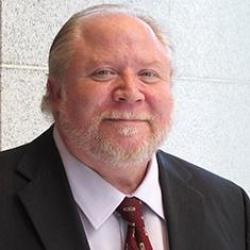Moving as one toward bigger ‘new literacy’ goals

Eric Newton outlines 11 goals for news and media literacy — goals necessary to meet the challenges of the modern world.
This blog post is an updated excerpt of News Co/Lab co-founder Eric Newton’s report to the Knight Commission on Trust, Media and Democracy. Newton helped the commission develop its recommendations on literacy, including that all Americans by age 18 be “digitally literate citizens.” Read the first, second and third posts in the series.
With the accelerating digital age comes a sobering truth. Computers are easily upgraded; people, not so much. With each passing minute, the gap seems to widen between what machines can do and what consumers actually use them to do. There is no Moore’s Law for human intelligence; unlike new microchips, the brains of new humans do not regularly double in processing power.
None of this would be a problem if the public simply learned to use the powerful new tools. But we haven’t — at least not yet — even though we must. Social media, for example, has put us at the center of news flows. But the recently released Crisis in Democracy reports that this has “overwhelmed” our ability to find trustworthy news. As a nation, our grasp on the new literacies of the digital age is so tenuous, U.S. adults finished dead last in a study of digital problem solving.
We want to blame anyone but ourselves. If technology platforms were ethical, they would block misinformation. If media companies took less profit, our news would be better. If only cable TV would cut the commentary … if only politicians would stop lying … if only the hackers and cyber-armies would stand down. Society tends to care about only the quick-fix “supply side” solutions to the misinformation problem.
That’s dangerous. In free societies, governments, corporations and powerful individuals shouldn’t control the news. All-powerful entities always try to twist the public mind. This doesn’t mean we should ignore institutions. We need reforms that empower us, that grow digital First Amendment freedom and stimulate nonprofit and volunteer news systems. We need digital anti-trust law and more consumer information rights. We need journalists who are more transparent and better engaged with the communities they serve. These reforms have one thing in common. They require us to do our part, to become smarter news consumers. To get there, we also have to work on ourselves, the “demand side” of news and information.
Only sustained effort will produce results. In the long run, education will do its part to improve news and information. But in the United States, education reform has eluded us. Some local schools go so far as to ban scientifically and historically accurate texts. Some states resist raising standards. Some media literacy teachers don’t know what they are talking about. It may take a long time to really improve education, but we can’t stop trying.
Fortunately, there are workarounds. More and more learning happens outside the classroom. A smart phone isn’t just a media center — it’s a schoolhouse. An example: For years, grantmakers struggled to improve First Amendment education in K-12 schools. It didn’t gel until the era of social media. Students were media producers on social media as well as consumers. They enjoyed free expression, and wanted to look under the hood.
The idea behind the “new literacies” is not new. What will it take to rally educators behind them?
The new report from the Knight Commission on Trust, Media and Democracy outlines recommendations for restoring trust in journalism in four broad areas: transparency, quality journalism, innovation and inclusion.
It proposed two “moon shot” goals for news and media literacy:
- Young people should be competent in new literacies before the age of 12 (before joining social media).
- Every 18-year-old going to the polling place for the first time should be a “digital citizen” capable of finding and understanding the news and information needed to make informed choices.
These are worthy goals. Getting there will take years (decades in some states). So here are some interim goals to help us along the way:
1. Core competencies
“Atomize” the core competencies of the new literacies and sprinkle their essence on every course on every topic. From information literacy, learn the best way to find information. From news literacy, the best ways to tell fact from fiction. From media literacy, the best ways to create. From civics, the best ways to act on information. From digital literacy, the best ways to protect oneself. Develop drop-in modules that would allow any teacher to emphasize these “new fundamentals.” (The News Co/Lab is working on this one.)
2. Civics
In K-12 education, the current momentum toward “digital citizenship” should include the fundamentals of digital, news and media literacy. Drive news literacy and current affairs discussions back into the classroom by adding them to new state laws that raise civic education standards. Given the nation’s polarization, news literacy may well become the sex ed of the 21st Century, as controversial in some quarters as teaching contraception. It should be done nevertheless, with politically neutral approaches, emphasizing empathy, cultural awareness, civility — and fact-based arguments.
3. Schools
Create a massive teacher training project with the goal of every American teacher, within five years, becoming fluent in the fundamentals of the new literacies. (See the training efforts by the Media Education Lab and the News Literacy Project.) Work with schools of education. Change college admission tests to measure a student’s ability to navigate cyberspace and tell fact from fiction.
4. Libraries
Every librarian should be fluent not just in information literacy, but in the fundamentals of digital, media, news and civic literacy as well. (The Center for News Literacy’s pilot program with the American Library Association is a start). Create adult education programs throughout the nation in public libraries. Encourage “Friends of the Library” volunteers, nonprofit and service-related organizations to work with public broadcasting and other local media to use neutral fact-finding techniques to do “community fact-checking” — local fact-checking projects that satisfy people on different sides of controversies.
5. Media across the curriculum
Decades ago, the “Writing Across the Curriculum” movement swept colleges. The notion: Every graduate should be able to communicate. Today, we need writing — and more. Scientists today need to know how to make interesting videos, interactive websites or educational games. Media fluency should be required of all graduates — a rigorous course team-taught by experts in media literacy, news literacy, information literacy, digital literacy and civics literacy.
6. Public education campaigns
Funders should support public service announcements from the Ad Council to encourage people to “think before you share.” A raft of new programming in public broadcasting is possible, including educational programs aimed at children from all levels, from an animated “News Hound” series to “teaching documentaries” that combine video, online education and civic participation.
7. Games, tools and adaptive learning
The new literacies involve complex concepts, making them ideally suited for “serious games.” The new literacies also are candidates for online learning that adapts to individual needs. Pouring resources into this area can create a powerful environment of self-education, offering people without access to the best schools a way to learn as much as anyone.
8. Information ethics
A campaign for all non-fiction information providers to transparently post their information ethic. As the Trust Project currently does with traditional newsrooms, work with platforms to help all non-fiction content providers provide verifiable, machine-readable data about their work that allows search engines to look for quality. Encourage people to develop and post their personal information ethic.
9. Research
Major research funding for the development of ethical artificial intelligence systems to detect the fabricated audio and video technology coming out of commercial labs and computer science departments. If you think “fake news” is a problem now, just wait a few years. Soon you may see a convincing video of a world leader saying something that, in fact, the person never said. Enhanced visual literacy will help here, but not enough. Only detection technology — which might become a major commercial area, as anti-virus software is today — will be able to spot fakes. Further studies are needed in automated fact-checking; how fabricated news flows; how to best correct errors and the best ways of teaching the new literacies.
10. Funding
Increase investment in existing programs — eRate, Department of Education and the Corporation for Public Broadcasting — for the new literacies. Grow the budgets of nonprofit literacy programs: The News Literacy Project, especially. Develop a plan for the U.S. to rejoin UNESCO to contribute to global efforts to advance the new literacies.
11. Transparency and engagement
Encourage technology companies to develop ways for people to get at (and correct) the personal information that businesses large and small have on each of us. Push for news companies to commit to making their journalism more accurate and transparent, promote the new literacies as part of their missions, and, most importantly, to engage their communities as they plan, report and follow their journalism. (The News Co/Lab is working on this one.)
The cost
The cost of a sustained effort would be large. We have a K-12 education system that by itself already spends many hundreds of billions of dollars every year. But the cost of not doing anything would be larger. A nation that can’t tell fact from fiction is a nation about to fall.
My colleague, media literacy professor and News Co/Lab co-founder Dan Gillmor, says it this way:
“We need, in America and the world, to ensure that children grow up with the kinds of principles and skills — a variety of literacies — that too many don’t learn today. Then we need to make those principles and skills part of people’s lifelong education and activity. The way to have an informed citizenry is by having citizens who think for themselves.”
The old literacy of language is required at every level of education, available in elective form in greater variety as one moves along. Without a leap forward in literacy education — increases at all levels, including not one but all the new literacies — how can we possibly meet the challenges of the modern world?

Eric Newton is a global leader in the digital transformation of news and a key figure in the creation of news literacy. As the Innovation Chief, he drives change and experimentation at Cronkite News, the news division for Arizona PBS.
